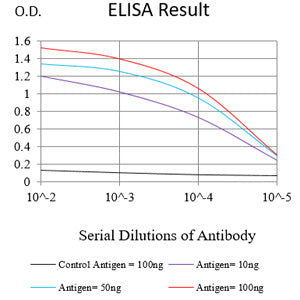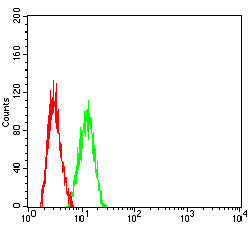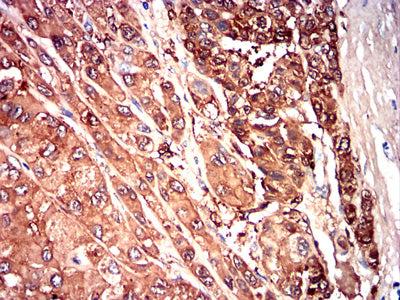


| WB | 咨询技术 | Human,Mouse,Rat |
| IF | 咨询技术 | Human,Mouse,Rat |
| IHC | 1/200-1/1000 | Human,Mouse,Rat |
| ICC | 技术咨询 | Human,Mouse,Rat |
| FCM | 1/200-1/400 | Human,Mouse,Rat |
| Elisa | 1/10000 | Human,Mouse,Rat |
| Aliases | SAA; PIG4; SAA2; TP53I4 |
| Entrez GeneID | 6288 |
| clone | 1A12E5 |
| WB Predicted band size | 13.5kDa |
| Host/Isotype | Mouse IgG1 |
| Antibody Type | Primary antibody |
| Storage | Store at 4°C short term. Aliquot and store at -20°C long term. Avoid freeze/thaw cycles. |
| Species Reactivity | Human |
| Immunogen | Purified recombinant fragment of human SAA1 (AA: 19-122) expressed in E. Coli. |
| Formulation | Purified antibody in PBS with 0.05% sodium azide |
+ +
以下是关于SAA1抗体的3篇参考文献示例(文献信息为模拟概括,仅供参考):
1. **文献名称**:*SAA1 Antibodies Promote Pro-Inflammatory Signaling in Rheumatoid Arthritis*
**作者**:Chen L, et al.
**摘要**:该研究探讨了SAA1抗体在类风湿性关节炎患者中的表达及其促炎作用,发现SAA1通过激活NF-κB通路加剧关节炎症,提示其作为治疗靶点的潜力。
2. **文献名称**:*SAA1 as a Biomarker in Colorectal Cancer: Role of Specific Antibodies in Tumor Microenvironment*
**作者**:Wang Y, et al.
**摘要**:研究利用SAA1特异性抗体分析结直肠癌组织,发现SAA1高表达与肿瘤进展相关,抗体检测可辅助评估患者预后及免疫微环境特征。
3. **文献名称**:*Development of a High-Sensitivity ELISA for SAA1 Detection Using Monoclonal Antibodies*
**作者**:Tanaka K, et al.
**摘要**:报道了一种基于SAA1单克隆抗体的高灵敏度ELISA检测方法,验证了其在血清样本中检测低浓度SAA1的可靠性,适用于早期炎症性疾病诊断。
建议通过PubMed、Google Scholar等平台搜索关键词“SAA1 antibody”、“serum amyloid A1”获取真实文献。
The serum amyloid A1 (SAA1) protein is a major acute-phase reactant primarily synthesized in the liver and released into circulation during inflammatory responses. As a member of the SAA family, it plays a critical role in innate immunity, acting as a chemoattractant, modulating immune cell functions, and participating in lipid metabolism by associating with high-density lipoproteins (HDL). SAA1 levels rise dramatically (up to 1.000-fold) in response to infection, trauma, or chronic inflammation, making it a biomarker for conditions like rheumatoid arthritis, atherosclerosis, and cancer. However, persistent elevation of SAA1 is linked to pathological outcomes, notably amyloid A (AA) amyloidosis, where misfolded SAA1 aggregates deposit in tissues, causing organ dysfunction.
SAA1 antibodies are essential tools for detecting and quantifying SAA1 in research and diagnostics. These antibodies, often monoclonal or polyclonal, enable techniques like ELISA, Western blot, and immunohistochemistry to study SAA1 expression, localization, and its role in disease mechanisms. Recent studies also explore SAA1's potential as a therapeutic target, with antibodies being developed to neutralize its pro-inflammatory or amyloidogenic effects. Despite its well-characterized acute-phase role, ongoing research aims to unravel SAA1's dual functions in homeostasis and pathology, emphasizing its context-dependent roles in inflammation resolution versus chronic disease progression.
×